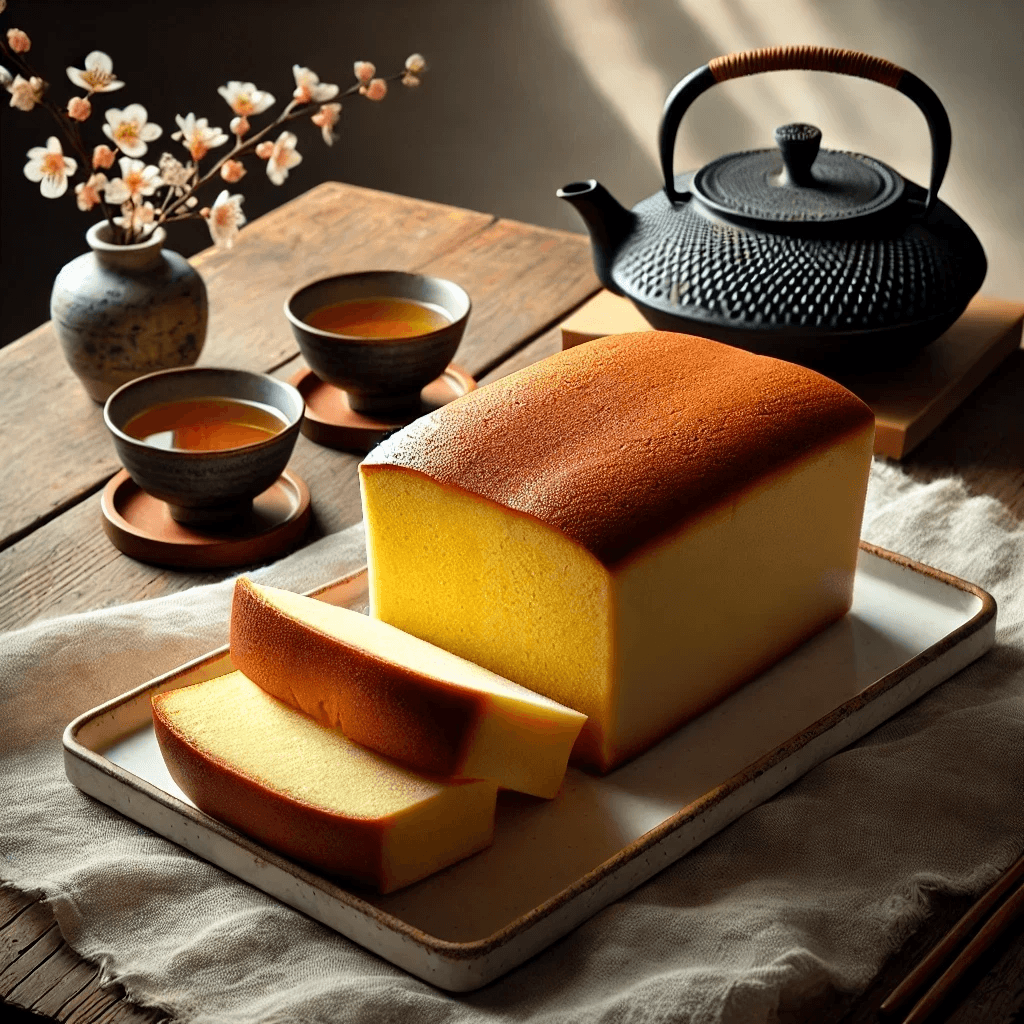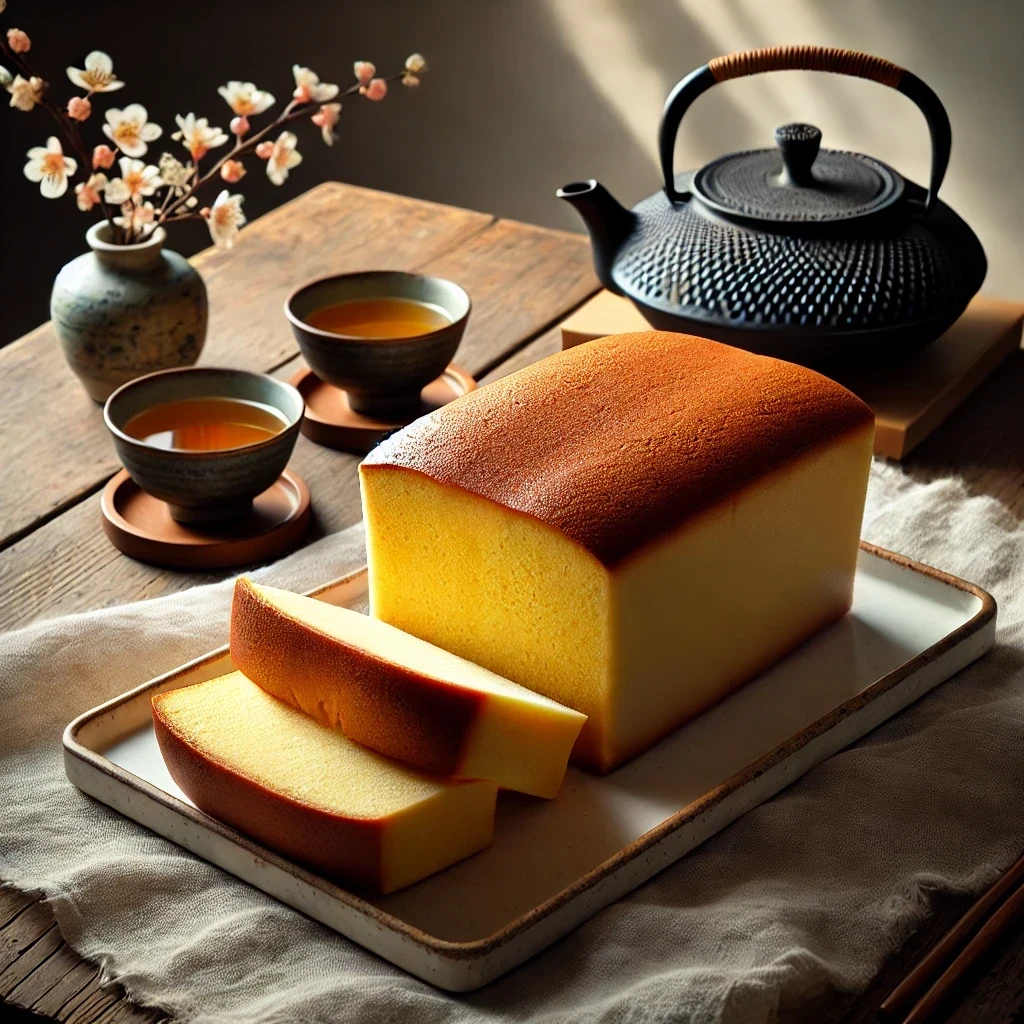
Castella Cake: A Sweet Journey from Portugal to Japan
Welcome back to Around the World in 80 Bakes, where we travel the globe one delicious bake at a time. Today, we’re exploring Castella Cake from Japan!
Castella cake, known affectionately in Japan as "Kasutera," is a deliciously soft, moist, and airy sponge cake renowned for its subtly sweet flavour and delightful texture. Often associated with Japanese cuisine, Castella cake surprisingly has its roots in Europe, specifically Portugal. Let's delve into the fascinating journey of how Castella travelled from Portugal to Japan, becoming one of Japan's most beloved cakes and also considered a type of wagashi (traditional Japanese sweets).

The Portuguese Origins of Castella
The story of Castella cake begins in the 16th century when Portuguese merchants and missionaries first arrived in Japan. The cake's name, "Castella," is believed to have originated from the Portuguese "Pão de Castela," meaning "bread from Castile," referring to a region in Spain where this type of cake was popularised before spreading to Portugal. Portuguese sailors commonly carried this durable, delicious cake on long voyages, which is how it eventually found its way to the shores of Nagasaki.
Castella's Introduction to Japan
In the late 1500s, Portuguese traders introduced Castella to the Japanese city of Nagasaki. It was originally presented as a luxury item, reserved for nobles, aristocrats, and the wealthy merchant classes due to the rarity of ingredients like sugar and eggs at the time. Over centuries, Castella evolved uniquely within Japan, becoming distinct from its European ancestors and embracing local tastes.
Evolution in Japan
Japanese confectioners embraced Castella, modifying the original recipe to suit local preferences. They developed techniques that gave Castella its signature moist, dense texture and subtle sweetness. Unlike traditional European sponge cakes that often require baking powder or yeast, authentic Japanese Castella relies solely on meticulous whipping of eggs and precise baking methods to achieve its iconic fluffy yet compact structure.
In Nagasaki, Castella evolved into an art form. Confectioners mastered techniques such as carefully controlled baking temperatures and wrapping freshly baked cakes in parchment to retain moisture, ensuring the soft, delicate crumb became a hallmark of true Japanese Castella.
Castella Today
Today, Castella remains hugely popular throughout Japan and has spread across Asia and the globe, enjoyed as a tea-time snack, a sophisticated gift, or simply as a comforting treat. It often features in celebrations, special occasions, and cultural exchanges, symbolising hospitality and refinement.
Variations such as matcha (green tea), honey, and chocolate Castella have emerged, expanding the traditional boundaries of the cake's flavour profile while honouring its historical roots.
Why Castella is Still Loved
The enduring appeal of Castella lies in its simplicity, elegance, and nostalgia. It stands as a delicious example of how culinary traditions can cross continents, adapting to new cultures and tastes while preserving the essence of their origins.
Whether savoured with a cup of tea or presented elegantly as a thoughtful gift, Castella cake continues to be cherished worldwide, a sweet testament to centuries of culinary history connecting Portugal to Japan.
Want to make Castella at home?
Check out our easy and authentic Castella cake recipe here and enjoy a piece of delicious history!
Ingredients
- 3 large eggs
- 100g caster sugar
- 100g bread flour
- 40g honey
- 1 tablespoon warm water
Instructions
- Preheat oven to 160°C. Line a rectangular cake tin with baking parchment.
- Whisk eggs and sugar until thick, creamy, and tripled in volume.
- Sift flour into the egg mixture gradually, folding gently.
- Mix honey with warm water, and gently fold into batter.
- Pour batter into prepared tin and bake for 40-45 minutes, until golden.
- Remove from oven, cool in parchment to maintain moisture, and slice to serve.
Share your thoughts
Did you try this recipe? Rate it below and let others know what you think!